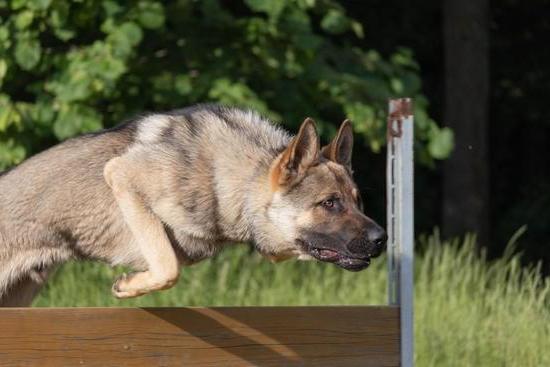Are you wondering how to train a dog to open its mouth? Teaching your furry friend to open its mouth on command may seem like a simple trick, but it can be a useful skill for various reasons. Whether you need to administer medication, check your dog’s oral health, or simply want to impress friends and family with your pet’s obedience, training your dog to open its mouth can be beneficial for both you and your furry companion.
Positive reinforcement training is an effective and humane approach for teaching dogs new behaviors. By using rewards such as treats, praise, and play, you can motivate your dog to learn and perform desired actions. This method not only strengthens the bond between you and your pet but also makes the training process enjoyable for both of you.
In this article, we will provide you with a step-by-step guide on how to teach your dog to open its mouth on command using positive reinforcement. We will also discuss common mistakes to avoid during the training process, tips for troubleshooting challenges that may arise, and techniques for incorporating play and fun into your dog’s training routine.
Additionally, we will explore the importance of building trust and communication with your dog during training, maintaining consistency and patience in teaching new commands, and when it may be necessary to seek professional help for more advanced techniques. Let’s dive into the importance of training your dog to open its mouth and how to do so effectively.
The Basics of Positive Reinforcement Training for Dogs
Positive reinforcement training is a highly effective method for teaching your dog new commands and behaviors, including how to open its mouth on command. This training approach focuses on rewarding your dog for exhibiting the desired behavior, rather than punishing them for making mistakes. By using positive reinforcement, you can create a fun and enjoyable learning experience for your dog while strengthening your bond with them.
One of the fundamental principles of positive reinforcement training is to use rewards to encourage your dog to perform the desired behavior. These rewards can include treats, praise, toys, or any other things that your dog finds motivating. When teaching your dog to open its mouth, it’s important to have high-value rewards readily available to reinforce the behavior effectively.
Another key aspect of positive reinforcement training is timing. It’s crucial to deliver the reward immediately after your dog opens its mouth in response to your command. This helps your dog understand which specific action is being rewarded and reinforces their understanding of the command you are teaching them. Consistency in timing and delivery of rewards is essential for successful positive reinforcement training.
Positive reinforcement is also about creating a positive association with the desired behavior. When teaching your dog to open its mouth, make sure that the entire training process is fun and engaging for both you and your pet.
Incorporate play into the training sessions, use an upbeat tone of voice, and ensure that your dog feels excited about learning this new command. By focusing on positivity and enjoyment during the training process, you can effectively teach your dog how to open its mouth on command while strengthening the bond between you.
Step-by-Step Guide to Teaching Your Dog to Open Its Mouth on Command
Understanding the Importance of Teaching Your Dog to Open Its Mouth
Training your dog to open its mouth on command can be a useful skill for various reasons. It can be helpful for administering medication, dental care, or even just checking your dog’s oral health. By teaching this command, you can ensure that your furry friend is comfortable with having its mouth handled and examined, which can ultimately lead to better overall health and well-being for your pet.
The Basics of Positive Reinforcement Training
Positive reinforcement is the key to training any dog new commands, including teaching them to open their mouths. Using treats, toys, or praise as rewards when your dog performs the desired behavior will encourage them to continue doing so in the future. It’s important to be patient and consistent with this training method, as it may take some time for your dog to understand and master the command.
Step-by-Step Guide to Teaching Your Dog to Open Its Mouth
Repeat this process consistently until your dog reliably opens its mouth on cue. Be sure to practice this command in different environments and situations to ensure that your dog understands and responds regardless of distractions.
Common Mistakes to Avoid When Training Your Dog to Open Its Mouth
When training your dog to open its mouth on command, there are several common mistakes that pet owners should be aware of in order to effectively guide their furry friend through the learning process. By avoiding these pitfalls, you can ensure a smoother and more successful training experience for both you and your canine companion.
Here are some common mistakes to avoid:
- Using force or physical manipulation: It’s important to never use force or physical manipulation to try to open your dog’s mouth during training. This can cause fear or discomfort for your pet and may lead to negative associations with the training exercise.
- Skipping the foundation: Training your dog to open its mouth on command requires a solid foundation of basic obedience commands. Skipping this crucial step can result in confusion for your dog and hinder their ability to learn the new command.
- Inconsistency: Inconsistency in your commands or rewards can lead to confusion for your dog. Make sure to use the same verbal cue and hand signal each time you ask your dog to open its mouth, and always reward them for following the command.
By being aware of these common mistakes and actively avoiding them during training sessions, you can set your dog up for success in learning how to open its mouth on command. Utilizing positive reinforcement techniques, consistency, and patience will help create a positive and effective training experience for both you and your beloved pet.
Remember that every dog learns at its own pace, so be patient and understanding throughout the training process. If you find yourself struggling or experiencing difficulties, don’t hesitate to seek professional help from a certified dog trainer who can provide expert guidance tailored to your specific needs.
Tips for Troubleshooting Challenges in Training Your Dog to Open Its Mouth
Training your dog to open its mouth on command can be a fun and rewarding experience, but it may come with its fair share of challenges. Whether your pup is struggling to understand the command or seems unwilling to comply, it’s important to troubleshoot these issues in a patient and positive manner. Here are some tips for overcoming common challenges when training your dog to open its mouth:
- Assess Your Dog’s Comfort Level: Before diving into training, take note of your dog’s comfort level with having its mouth manipulated. If your dog seems hesitant or uncomfortable, start by slowly introducing the idea before moving on to the command.
- Adjust Your Training Method: Not all dogs respond to the same training methods. If your current approach doesn’t seem to be working, consider switching things up. For example, if you’ve been using treats as a reward, try using a favorite toy instead.
- Be Patient and Consistent: Remember that every dog learns at its own pace. It’s important to be patient and consistent with your training efforts. Avoid getting frustrated if progress seems slow, and continue reinforcing the command in short, regular training sessions.
In addition to these tips, it’s essential to recognize that not all dogs will master this command easily. Some breeds and individual dogs may naturally struggle with certain commands due to their physical limitations or personality traits. If you find that you’re consistently facing roadblocks in training your dog to open its mouth, don’t hesitate to seek professional help from a certified dog trainer or behaviorist who can provide guidance tailored to your specific situation.
Incorporating Play and Fun Into Your Dog’s Training Routine
When it comes to training your dog to open its mouth, it’s important to make the process enjoyable for both you and your furry friend. Incorporating play and fun into your dog’s training routine can make the learning experience more engaging and effective. Dogs are naturally playful animals, so harnessing that energy can be a great way to teach them new commands.
One of the best ways to incorporate play into your dog’s training routine is by using toys as part of the training process. For example, you can use a favorite toy or a chew stick as a positive reinforcement reward when teaching your dog to open its mouth on command. By associating the action of opening their mouth with a fun and rewarding activity, you can make the training process more enjoyable for your dog.
Another way to make training fun for your dog is by incorporating interactive games into their routine. Games such as fetch or tug-of-war can be used as a way to reinforce the command to open their mouth while also providing physical exercise and mental stimulation for your dog. This not only helps in teaching your dog new commands but also strengthens the bond between you and your pet, making the training process more enjoyable for both of you.
It’s important to remember that every dog is unique, so finding what activities and games they enjoy most will be key in making their training experience fun and effective. Taking the time to understand your dog’s preferences and interests will allow you to tailor their training routine to suit their individual needs, making the learning process more engaging for them.
Building Trust and Communication With Your Dog During Training
Building a strong foundation of trust and communication with your dog is crucial in any training process, including teaching your dog to open its mouth on command. When your dog trusts you and understands your cues, it becomes much easier to teach them new commands and behaviors. This section will explore how to build a strong bond with your dog during training.
Establishing Trust Through Positive Reinforcement
One of the key ways to build trust with your dog is through positive reinforcement. Whenever your dog follows a command correctly or exhibits the desired behavior, reward them with treats, praise, and affection.
This helps your dog associate obedience and good behavior with positive outcomes, strengthening the bond between you and your pet. When it comes to teaching your dog to open its mouth, using positive reinforcement can make the process more enjoyable for both you and your furry friend.
Creating Clear Communication Channels
Clear communication is essential in building trust with your dog during training. Use consistent verbal cues and hand signals when teaching your dog new commands, including “open” for getting them to open their mouth. By being consistent in your communication, you help your dog understand what is expected of them, leading to better results in their training.
Additionally, pay attention to your body language and tone of voice, as dogs are very attuned to these cues. By maintaining clear communication channels, you can deepen the trust and understanding between you and your canine companion.
Promoting Bonding Activities
Incorporating bonding activities into your training routine can also help foster trust between you and your dog. Spend quality time together engaging in playtime, walks, or other activities that promote bonding. This helps strengthen the emotional connection between you and your pet, making them more receptive to learning new commands such as opening their mouth on cue.
By focusing on building trust and communication with your dog during training, you create a solid foundation for successfully teaching them new commands like opening their mouth. Remember that patience, consistency, and positive reinforcement are essential in this process.
Maintaining Consistency and Patience in Teaching Your Dog New Commands
When it comes to teaching your dog to open its mouth on command, consistency and patience are key. Dogs, like humans, learn best through repetition and positive reinforcement. It’s important to remain consistent in your training methods and patient with your dog as they learn this new command.
Consistency means using the same cue or command every time you want your dog to open its mouth. Whether it’s “open,” “show me,” or another word of your choosing, stick to the same command every time. This will help your dog understand what is expected of them and make it easier for them to respond correctly.
Patience is also crucial when training your dog to open its mouth. Some dogs may pick up on this command quickly, while others may take more time to fully grasp it. It’s important not to get frustrated if your dog doesn’t immediately understand what you’re asking of them. Stay calm, offer plenty of praise and rewards for small victories, and be patient as your dog learns at their own pace.
Incorporating consistency and patience into your training routine will help set your dog up for success in learning new commands like opening its mouth on cue. Remember to stay positive and keep the training sessions short and enjoyable for both you and your furry friend.
| Training Tip | Description |
|---|---|
| Consistency | Using the same cue/command every time when training. |
| Patience | Being patient as a dog learns at their own pace. |
Advanced Techniques for Teaching Your Dog to Open Its Mouth
In conclusion, training your dog to open its mouth on command can be a fun and rewarding experience for both you and your furry companion. By understanding the importance of this skill and using positive reinforcement training techniques, you can effectively teach your dog to follow this command. However, it is important to acknowledge that there may be instances where seeking professional help is necessary.
While the step-by-step guide provided in this article can help you begin the process of training your dog to open its mouth, there may be some advanced techniques that require the expertise of a professional trainer. If you encounter challenges or feel that your dog is not responding well to the training, it may be time to seek assistance.
A professional trainer can assess your dog’s behavior and tailor a training program specifically suited to your dog’s needs.
Remember to maintain patience and consistency throughout the training process. Building trust and clear communication with your dog is essential for successful training. Always incorporate play and fun into your dog’s routine to keep them engaged and motivated.
With dedication and the right approach, you can help your dog master the command of opening its mouth on cue. Overall, the key is to stay patient, remain consistent, and seek professional help when needed in order to ensure successful training for both you and your beloved pet.
Frequently Asked Questions
How Can I Get My Dog to Open His Mouth?
The first step to getting your dog to open his mouth is to gain his trust and build a positive association with the action. You can start by gently massaging his jaw and rewarding him with treats when he opens his mouth voluntarily.
How Do You Teach an Animal to Open Its Mouth?
Teaching an animal to open its mouth requires patience, positive reinforcement, and desensitization. Start by introducing the touch near the mouth, then gradually progress to lightly holding the mouth open while rewarding the animal for compliance.
Why Doesn’t My Dog Want to Open Her Mouth?
There are several reasons why your dog may not want to open her mouth, including pain or discomfort in the mouth or jaw area, fear or anxiety about the action, or simply not being trained or conditioned to do so. It is important to observe any signs of pain or distress and consult a veterinarian if necessary.

Welcome to the blog! I am a professional dog trainer and have been working with dogs for many years. In this blog, I will be discussing various topics related to dog training, including tips, tricks, and advice. I hope you find this information helpful and informative. Thanks for reading!





